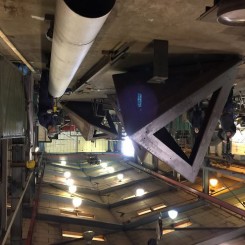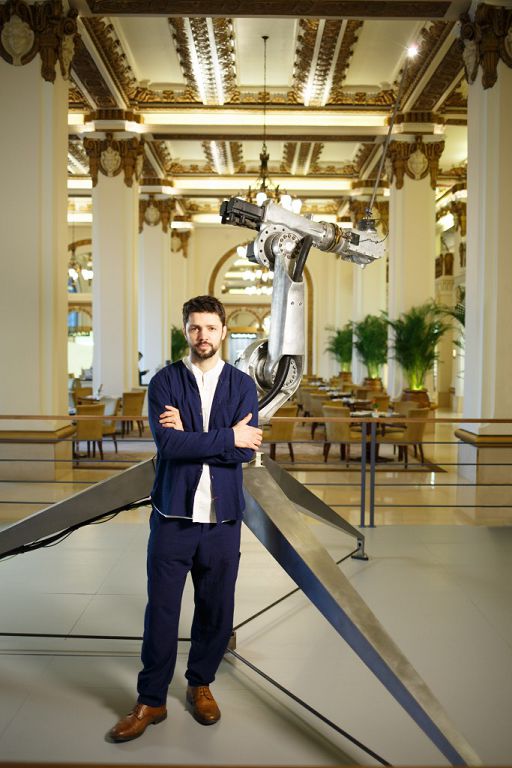This review is included in Ran Dian’s print magazine, issue 3 (Spring 2016)
Conrad Shawcross makes large-scale sculptures, some mechanical and involving light. But he is conceptually a draftsman. He draws: images and objects are pulled into being from space and matter. Lines are directed, patterns form—some are fleeting phantoms, others extruded masses and skeletons.
The technique of using the optical tracery of a moving light source to make drawings was first employed by Picasso in 1949—or at least it was first recorded then, by photographer Gjon Mili for LIFE magazine. The drawn line essentially traces something—a conceptual form—that in a Platonic sense already exists. It is drawn out of the ether as a thread or perhaps like a gas; think of when an image emerges from a dotted haze in the pointillist paintings of Georges Seurat.
During Hong Kong art week, and as part of an ongoing collaboration between The Peninsula Hotel and British Royal Academy of Arts, Shawcross will install one of his drawing robots in the hotel’s grand classical lobby.
Shawcross was born in 1977 in England. His parents are prominent writers, and he studied at revered, but also quintessentially traditional English art schools: Chelsea School of Art, the Ruskin School of Drawing and Fine Art (Oxford University), and the Slade School of Fine Art (University College London). Shawcross is the youngest member of the Royal Academy.
Drawing ex Machina
Conrad Shawcross: “[The installation] in Hong Kong is part of an ongoing series of commissions called the “Ada Project”. The core of it is a robotic instrument we have created, a six-axis robotic arm with a light at the end of it [ like a pen in a hand ], with which we create choreographed movements.
“We invite musicians to come to the studio and they have to spend a week with this preexisting movement and they respond to it musically—in some way, to compose music for the machine. So instead of the robot responding to the music, the music responds to the machine—flipping what normally happens, not unlike how a film-score [is composed] after all the edits have been done.”
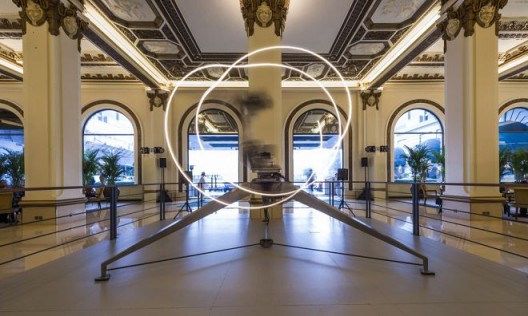
Conrad Shawcross, “ADA”, aluminum, steel, light, computer controlled mechanical system, dimensions variable, 2013 (©Conrad Shawcross; courtesy the artist and Victoria Miro, London. Photograph: André Morin)
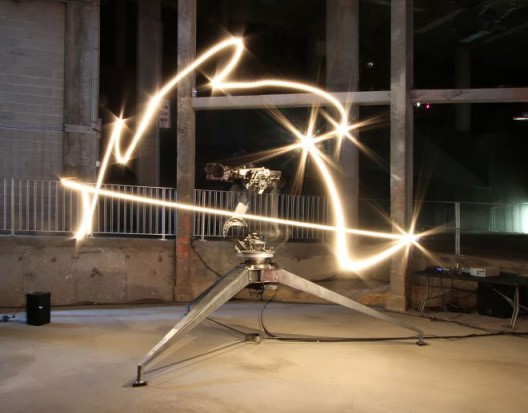
Conrad Shawcross, “ADA”, aluminum, steel, light, computer controlled mechanical system, dimensions variable, 2013 (©Conrad Shawcross; courtesy the artist and Victoria Miro, London. Photograph: André Morin)
Ran Dian: Essentially, the robotic arms trace a line or form, or, as Shawcross says, a path.
Conrad Shawcross: “When you see a photograph of the robot’s path, it’s a bit misleading, because that is a photographic effect. But the arm actually moves in a very human-like way—sensual, beguiling. It feels very alive. It’s quite slow, not rapid.”
“The machine is essentially drawing a line in space and then, when the light bulb is travelling fast, the line is thinner, and when it’s slow, the line is a bit thicker, like a brushstroke on paper. ”
Ran Dian: There’s a nice play on the concept of light being a particle as well as a beam.
Conrad Shawcross: “Absolutely. When you’re in the room with it, it’s a particle; but if you blink, you can see the tracery of the wave on your eyelids.”
Lovelace / Byron / Computers
The title of the work, “The Ada Project”, comes from Ada Lovelace (1815–52), a Victorian mathematician and daughter of the romantic poet Lord Byron, who worked with Charles Babbage on a prototype computer called the “Analytical Engine.” Often regarded as the first computer programmer, Ada died young following a misdiagnosis by doctors of ovarian cancer as “hysteria” induced by over-education.
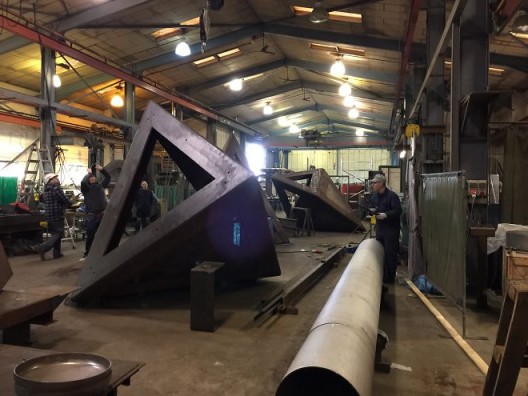
Conrad Shawcross, “Paradigm”, production photo, 2016 (©Conrad Shawcross; courtesy the artist and Victoria Miro, London)
Ran Dian: How will it be shown in Hong Kong, at The Peninsula?
Conrad Shawcross: “So far we have shown it in quite a variety of locations, such as the Palais de Tokyo—in the basement; a concrete, industrial, cavernous space, very dramatic and quite eerie. Then we took it to Tasmania as part of the Mofo Festival at MONA a couple of years ago, and then to the car park at the Vinyl Factory in London last year. In Hong Kong it is a really striking setting—this colonial tearoom, very polite! This stark, lunar-like robot will be in the center of the lobby and while people are having tea and scones, this strange, quite sensual, quite sexual robot will be caressing itself in the middle of the floor.
“Depending on the time of day, there will be a series of live concerts. Mira Calix [the musician] is coming out with us and she’s going to perform from her track. But when it’s not live, you can go up to the robot and there’s a series of four buttons you can press to activate the track and choreography. It’s like a robotic Wurlitzer jukebox. At the moment we’ve got four tracks, but it’s an ongoing project, so in the next year I hope to commission a couple more.”
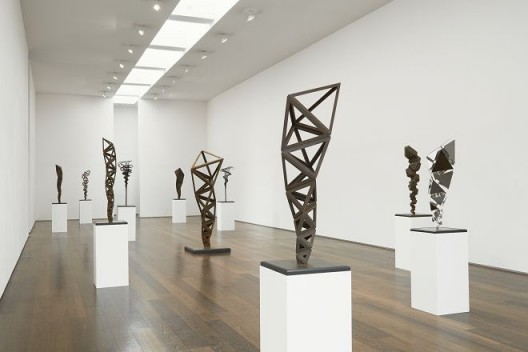
Conrad Shawcross, “Conrad Shawcross | Inverted Spires and Descendent Folds”, installation view at Victoria Miro, 2015 (© Conrad Shawcross; courtesy the artist and Victoria Miro, London)
The “Ada Project” is co-presented by the Royal Academy of Arts and The Peninsula Hong Kong from 22 March–5 April. Paradigm Studies will be on view at Victoria Miro, Art Basel Hong Kong, from 24–26 March.



